Allergies to cat food, chemicals, odors, shampoos, flea bites, medications are common reasons why hair can fall off. Areas with thinning or complete hair loss are found near the eyes, lips, lower chest, abdomen, and elbows.

- Hair loss on hind legs in cats
- Fleas and other parasites
- How to prevent hind paw baldness
- Causes of tail hair loss
- What to do
- Cat treatment for parasites
- Allergies:
- Why hair loss in kittens
- Peculiarities of alopecia diagnosis
- Medication treatment
- External treatment
- Identification and treatment of diseases that lead to hair loss
- Treatment of allergies that lead to baldness
- Psychogenic alopecia.
- What else can cause alopecia in cats
- Allergy
- Endocrine alopecia in cats
- How to treat alopecia
- Prevention of hair loss
Hair loss on hind legs in cats
We all know that cats shed, and that cat fur on the couch and on clothing is normal. However, it is important to know the difference between normal and abnormal hair loss. Thinning or hair loss in cats, also known as alopecia, on the back legs can be caused by a number of problems: fleas, allergies, bacterial infection or stress.
Hair loss occurs in response to many factors, including poor nutrition, autoimmune diseases, fungal infections, allergies and parasites.
Hair loss in cats can be partial or complete, and the pattern can vary or be symmetrical. The skin around the area of baldness may look normal or have redness, bumps and crusts. Hair loss is a symptom, and the root cause must be identified for treatment. If a cat has hair loss and is excessively scratching the area, the first thing to investigate is the itching problem. Here are the four most common causes of alopecia on the hind legs in cats.
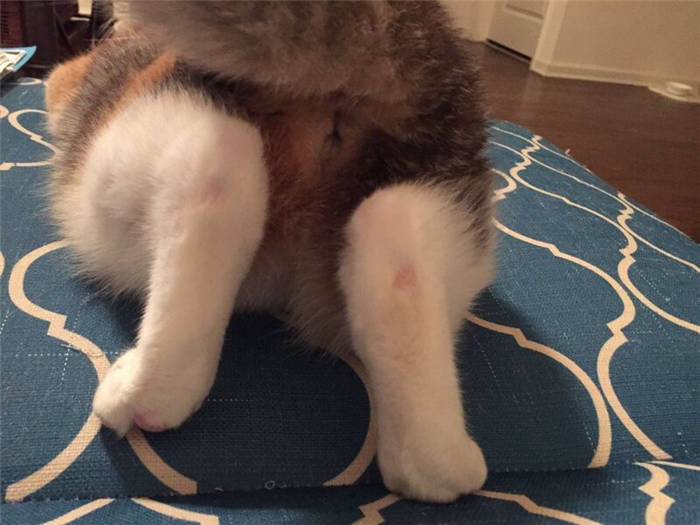
Fleas and other parasites
Fleas are one of the most common causes of hair loss on hind legs in cats. Fleas are not fun for any cat and can cause a lot of discomfort. Many cats develop allergies to flea bites. Hypersensitivity (allergy) to flea bites or allergic dermatitis from fleas (FAD) is very common in cats. In these cats, just one flea bite can cause severe and prolonged itching, which often results in hair loss and can lead to open sores or scabs on the skin, leading to a secondary bacterial infection.
Many cats will chew excessively or lick hair off their legs when they have fleas or FAD. Hair loss on the neck, legs and at the base of the tail can also be seen along with small hard crusts called miliary lesions, a term coined because the crusts look like millet seeds.
How to prevent hind paw baldness
Not all causes of alopecia in cats are preventable. However, you can take steps to make your cat as healthy and happy as possible.
- Make sure that your cat's personal stressors – whether it's environmental changes or another animal – are minimized so that she doesn't resort to over-caring due to frustration.
- Provide a nutritious diet, plenty of exercise and regular veterinary checkups to avoid serious health problems.
- Give your cat an effective monthly flea prophylaxis to prevent a parasite infestation that can cause hair loss.
- If you keep your cat indoors, this will also reduce the likelihood of her getting many mites.
Cats can lose hair on their hind legs for a variety of reasons. The first step in treatment is to find out the underlying cause of the hair loss on the hind legs. If you notice that your cat is losing hair, see your veterinarian. The sooner the cause is diagnosed, the sooner the cat will feel better and the hair will grow back.
Article author: Dr. Monica Tarantino .
A small animal veterinarian from Charlotte, North Carolina, with five years of experience as a therapist. Dr. Tarantino often rescues pets in need and owns four dogs.
Causes of tail hair loss
To stop hair loss in a cat's tail you must know what is causing it. Although different cats experience different troubles, keep these suspects in mind when analyzing the situation.
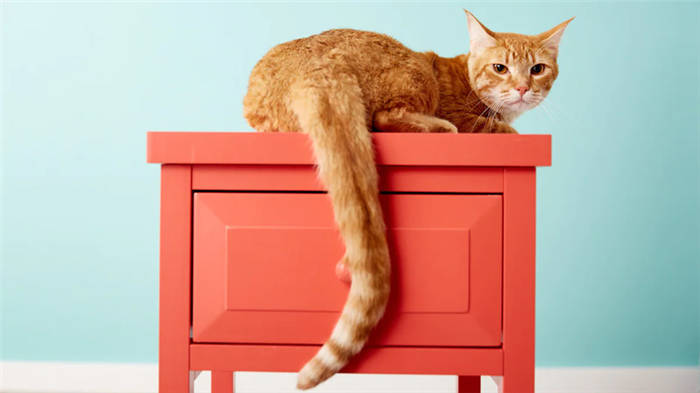
- Allergies. Like humans, cats also suffer allergic reactions when exposed to certain substances in the home. Affected members of the feline family often try to bite their tails and pull out tufts of hair until the allergens are gone. Fortunately, if your cat's tail hair loss is due to allergies, all you have to do is remove the allergens to solve the hair loss problem. Monitor your cat to decide what is causing her allergic reactions. For example, if certain foods are allergens, pets will vomit soon after eating.
- Tail gland hyperplasia in cats. Tail gland hyperplasia in cats, also known as "hairpin", is the result of sebaceous gland dysfunction, which results in the accumulation of waxy oily matter around the tail. The condition is usually characterized by an unpleasant odor, tiny red dots (caused by a bacterial infection) and hair loss. Tail gland hyperplasia in cats is common in cats and cats that are not hygienic. In most cases, cat parents can solve this problem by simply bathing and grooming them periodically.
- Parasites (fleas, ticks). In general, external parasites usually don't bother too much about their whereabouts once they manage to take over a host. That said, pesky bloodsuckers can accidentally gather at the base of the tail and cause trouble for the cat. Because the tiny parasites bite pets' skin for blood, they cause minor rashes, dry skin and itching. If your furry lump scratches the skin to reduce the itching, it accidentally pulls out a lot of hair. To properly deal with hair loss caused by parasites, you need to get rid of the parasite and treat the bites.
- Pain. If animals in the feline family feel pain in a certain spot, they will lick that spot to soothe themselves. Because of this, cats with arthritis will often lick painful joints. While licking does soothe cats, it also removes a lot of hair. So if you notice your cat's hair falling out at the base of the tail, you should definitely consider examining that area for signs of injury. If you see wounds, bruises, etc. right around your cat's tail, she is probably losing hair due to pain.
- Stress, anxiety and fear. Regular cats, being sensitive creatures, tend to be frightened by changes in the house. Unfamiliar faces, new pets, rearranging furniture … many things can cause your furry friend to panic. When cats feel deathly frightened, they use various means to relax: running, hiding, grooming… Most cats will return to their normal state after a while, but if they continue to feel fear, hair loss will occur. To put an end to hair loss caused by stress, anxiety and fear, it is important to help pets calm down.
What to do
Technically, average pet owners can solve the problem of hair loss at the base of a cat's tail on their own. However, if you want to be safe, it is highly recommended that you take your furry lump to the veterinarian for a comprehensive examination. Veterinarians will examine your cat thoroughly and possibly run some tests to see what is going on and then develop an appropriate treatment regimen. Obviously, people should refrain from treating cats without prior vet approval.
Well, cats do lose hair from time to time, but many feline experts believe that some breeds lose more hair than others because of genetics. In most cases, natural hair loss in cats involves little hair and automatically goes away with time, requiring no assistance.
In addition to natural alopecia, cats also experience acquired alopecia, which is a symptom of the condition and not the disease itself. When the underlying problem is resolved, acquired hair loss is likely to disappear in no time.
Fortunately, if the cause of the hair loss is properly addressed, the cat's hair should grow back as it did before. However, in order to make sure your hair grows smoothly, you need to act decisively as soon as you first notice that your cat is losing hair at the ponytail. In general, going to your local vet is always a win-win option if you feel something is wrong with your kitty.
Cat treatment for parasites
Treatment should be prescribed by a doctor. Most often prescribed complex medication spot-on (droppers of medication on the skin) in an intensified regimen – every 10-14 days. Stronhold, Inspector are used more often than others. If the skin is infected, the doctor will prescribe local treatments with antiseptic solutions and even antibiotics. Recently, there has been information about the effectiveness in cats of the tablet "Bravecto" used in dogs. Studies have already been conducted and safe doses for cats have been determined. However, there is no information in the instructions yet, but will probably appear very soon.
Allergies:
Alopecia can occur with allergies – food allergies and non-food allergies are allergies to environmental components and airborne allergens). These are self-induced alopecia. As a result of scratching and licking itchy areas. Diagnosis and treatment of these alopecia can only be diagnosed and treated if the itching and underlying disease are controlled.
Any alopecia requires a doctor's consultation. Do not self-treat or self-diagnose! Treatment in each case is individual, and with the wrong diagnosis you can only harm the cat!
Why hair loss in kittens
The causes of alopecia in kittens are even more numerous than in adults. The immune system is not fully formed, the formation of hormonal background and other factors make young kittens vulnerable to any pathology. Nutrition is of great importance for the condition of kittens' hair. An important factor is the timeliness of birth – premature babies or animals born with complications are at risk.
Do not delay a visit to the clinic if hair loss in the cat is accompanied by the following symptoms:
- Flaking and redness of the skin;
- severe itching;
- excessive licking of hair by the cat, especially in the same place;
- inflamed wounds, pustules, blisters, eczema in the place of baldness;
- unpleasant odor from the pet;
- hairs do not just fall out, but seem to break off;
- The bald spot is covered with scales – dry, soggy, yellow or grayish in color.
Accompanying symptoms may include: decreased body weight of the animal, refusal of food, problems with digestion and stools.
Peculiarities of alopecia diagnosis
To establish an accurate diagnosis, the veterinarian will examine the cat, prescribe laboratory and instrumental studies. If allergies are suspected, in addition to a general blood test, blood will need to be tested for antibodies. A blood chemistry will help to detect avitaminosis and other abnormalities in the body. If the doctor suspects an infectious disease, he will take a scrape of the pet's skin. In addition, in doubtful and complex cases, it is possible to appoint the cat ultrasound or X-ray.
Treatment of hair loss depends on the identified cause. In most cases, it is complex, including medications and vitamins for baldness, external treatment, correction of the cat's diet.
Medication treatment
Medication therapy consists of prescribing the following groups of drugs:
- antibiotics, antifungal – for infections;
- Sedatives – for increased emotionality, excitability;
- Antihistamines – to eliminate itching;
- Antiparasitic – in the presence of worms, external parasites;
- Immunostimulatory – to improve immunity.
In parallel, concomitant symptoms are treated with anti-inflammatory drugs, glucocortisteroids and other hormonal agents, and probiotics. Medicines are prescribed in different forms: tablets, powder, drops. In neglected cases, injections are indicated.
External treatment
Depending on the established diagnosis, the veterinarian will prescribe external medications. These can be anti-inflammatory, antipruritic, antiseptic ointments, gels, aerosols, drops from parasites.
In the presence of inflammation on the skin of the pet, seborrhea, abscesses and other lesions, treatment of the pet with medicinal shampoos is allowed. The following products have good reviews:
- Tropiclean. The composition contains: vitamin E and B5, oat flakes, plant extracts, coconut oil and other useful ingredients. In addition to quality cleansing the skin and coat of the cat, the product has an antiseptic and wound-healing effect, stimulates the growth of new coats;
- GlobalVet. According to reviews, the shampoo can restore even the most damaged and neglected hair. It contains panthenol and aloe extract. It can be used by kittens;
- "Disinfectant". Despite its low cost, the remedy effectively copes with external parasites, while healing the skin. Does not give the effect of dryness. In the composition: permethrin, plant extracts. It can be used for prevention;
- "Doctor". Contains chitosan, plant extracts, lanolin. Application is possible only by appointment of a veterinarian. Effectively eliminates itching, dandruff, allergic manifestations.
Identification and treatment of diseases that lead to hair loss
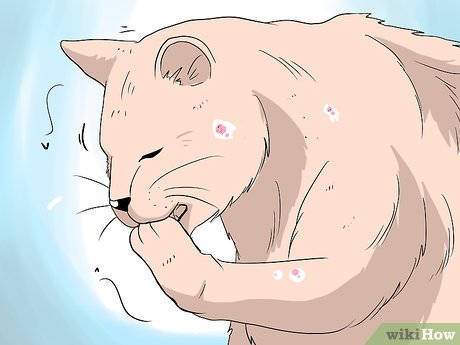
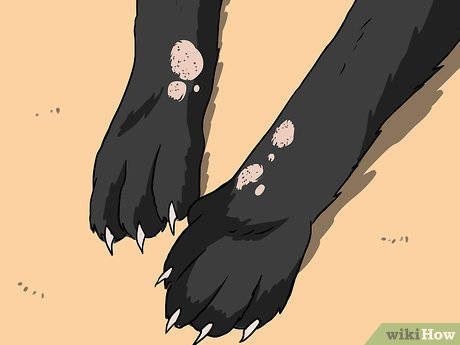
- Treatment consists of washing the cat with a medicated shampoo, which will reduce the amount of bacteria on the surface of the skin (a sedative may be required). In addition, oral antibiotics can be used (course – 4-6 weeks). Broad spectrum antibiotics (amoxicillin) are usually prescribed.
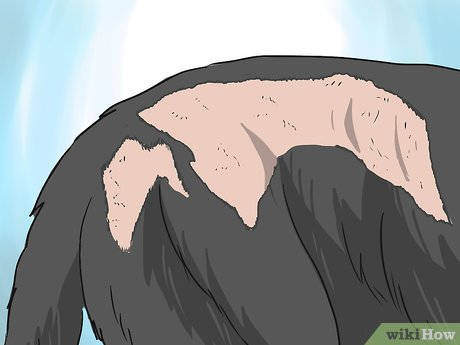
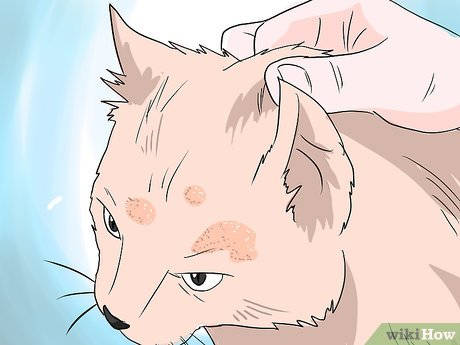
- Treatment: Hair cut very short plus oral medication (griseofulvin, ketoconazole, or itraconazole).
- Griseofulvin stops fungal cell division. [3] X Source of information The drug is better absorbed if given with a little butter. The usual dose is 125 mg 2 times a day for a medium-sized cat.
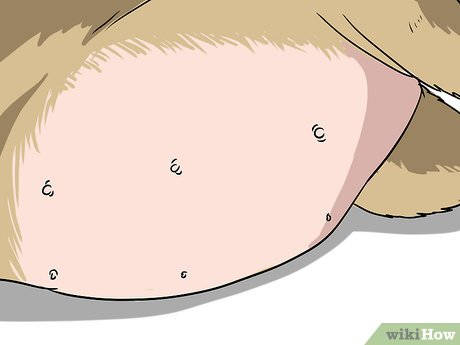
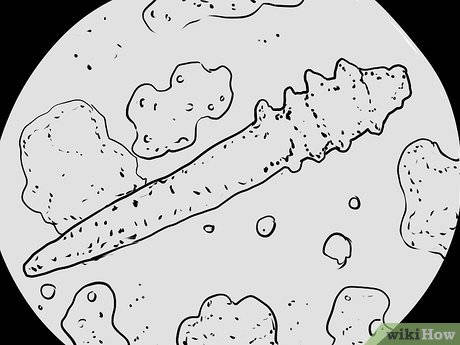
Treatment of allergies that lead to baldness
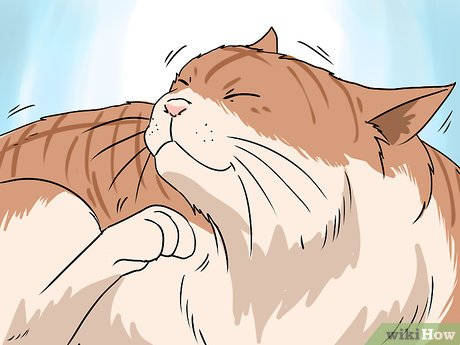
Cats can lose their hair due to allergies. Allergies can develop from external irritants and foods. It leads to itchy skin and sometimes diarrhea and vomiting. The itching contributes to excessive licking, which damages the hair; it looks as if the cat is losing hair on different parts of the body.
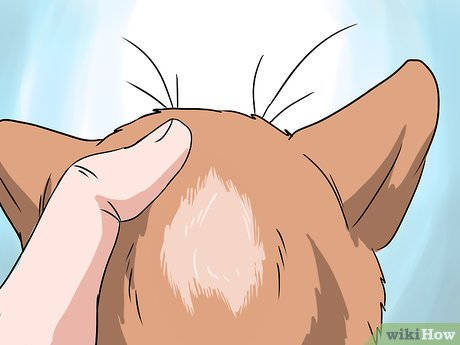
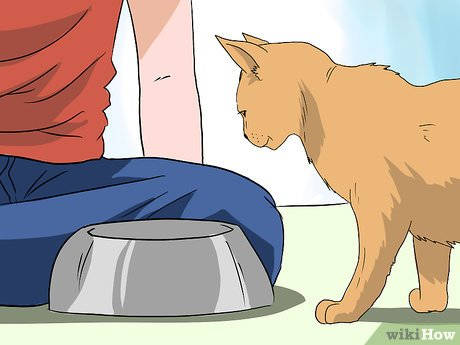
Psychogenic alopecia.
Alopecia in cats can be psychogenic in nature. That is, the cause in this case is compulsive behavior. For no apparent reason, a perfectly healthy, well-fed and well-groomed cat will go bald in a short period of time. With close observation, the owner may notice some peculiarities: the cat is overly preoccupied with grooming.
When a cat is constantly licking, biting and pulling its hair, it not only breaks the integrity of the coat, but also traumatizes the skin. Redness, sores and ulcers can develop on the bald patches. To get rid of pain, the animal licks the injured areas even more, which only makes the situation worse.
This behavior is called displaced behavior. If a cat stays for a long time in a stressful situation, such as not being able to catch a bird outside the window or limiting physical activity, it shifts the action to itself, as if self-soothing. The most frequent expression of displaced behavior is "self-grooming.
The reasons that cause psychogenic alopecia can be varied:
- Isolation and limitation of physical activity.
- The arrival of a new member of the family – it can be a new pet or a newborn baby. The focus of attention is shifted to the "new kid", and this fact causes negative emotions in the cat.
- Separation from the owner or family members.
- Renovation or moving.
- Boredom.
It is possible to avoid these problems if you give the cat enough attention: play with it often, pet it, provide conditions for normal physical activity, take care of its psychological comfort.
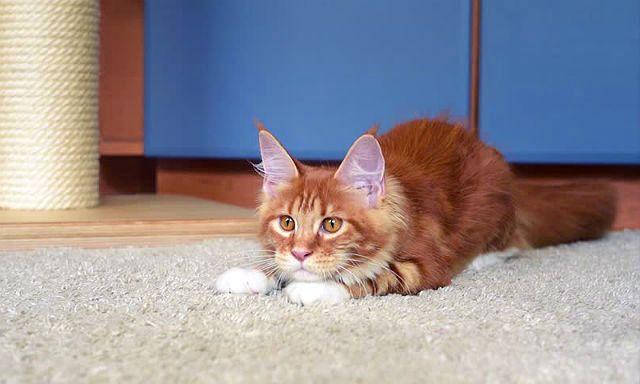
What else can cause alopecia in cats
In addition to the causes listed above, other factors can also cause alopecia in cats. They are divided into 2 categories: congenital and acquired.
A kitten with congenital alopecia can appear in a litter from a cat that was in unfavorable conditions while carrying her offspring:
Congenital alopecia in offspring is possible when close relatives crossbreed – inbreeding.
- Inflammation of the skin – dermatitis;
- seborrhea – hyper-secretion of sebaceous glands;
- parasitic infestation (scabies);
- infectious diseases;
- acute inflammatory processes ;
- blood diseases;
- lack of essential vitamins in the diet;
- reaction to certain medications;
- obesity;
- oncological diseases;
- Hormonal disorders: a lack or excess of thyroid hormones, failure of the adrenal glands;
- mechanical effects.
If the cat is balding locally, for example, in the neck area, underarms and on the back, you should pay attention to the harness and collar. Maybe they are too tight, or the active ingredient of the anti-flea accessory causes an allergy.
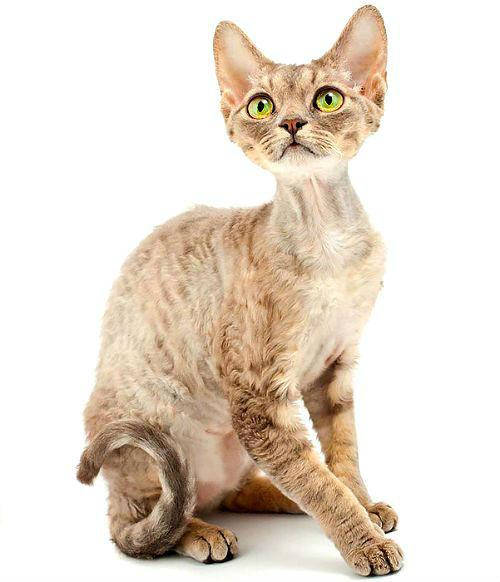
Hair also falls out on damaged areas of the skin. It can be a wound or a scratch after a fight. Once the cause is eliminated, the bald area of the skin recovers.
Allergy
Feline allergies are a common problem in veterinary dermatology. Recently, more and more are being diagnosed with hypersensitivity of the skin when cats have severe hair loss. The most common types of allergies include:
- Food intolerance to animal protein or a specific product (can be expressed as intermittent itching, scratching, loss of tufts of hair on different parts of the body and deterioration of hair quality, tearfulness).
- Flea allergic dermatitis is an adverse reaction to the saliva of fleas in cats. It appears as severe itching, restlessness of the animal and significant irregular baldness of the pet as a result of its own frequent licking.
- Medication intolerance or a side effect of therapy for a chronic disease (cancer or hormonal failure).
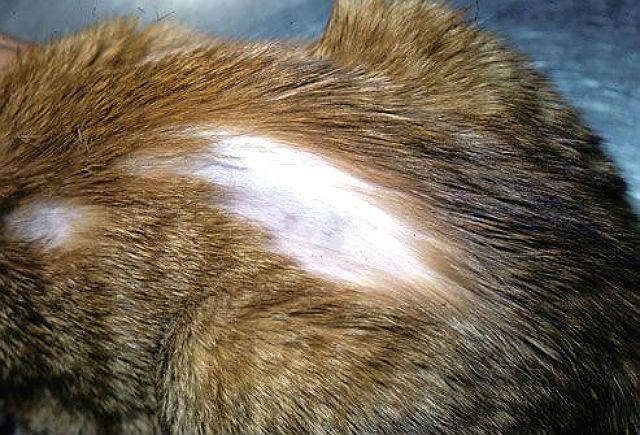
In each case, the treatment is chosen individually. In case of food allergies, the veterinarian prescribes a diet or develops a therapeutic diet. If there is a reaction to fleas, all measures should be taken to eliminate them (treatment with special preparations not only for the animal, but also for the premises all year round). And if the cat is itching and balding from medication, you will need to consult a veterinary specialist.
Attention! You should not try to treat allergic reactions in cats yourself and give them human medications, such as Suprastin, Tavegil and similar products. Because of the side effects of medications and incorrectly calculated dosage "by eye", the animal may be poisoned.
Endocrine alopecia in cats
Such in cats includes hypothyroidism – a disease of the thyroid gland, in which the formation of hormones T3 and T4 decreases sharply. The main symptoms of the disease in a kitten: delayed development, lethargy, disproportionate body formation, underdeveloped teeth, and a later completion of the skeleton.
On the coat, the disease is very characteristic: Kittens have a body mostly covered with undercoat with a small amount of hair, the hair is constantly falling off, it may have dandruff. When clipping, the hair is easily pulled out and grows slowly.
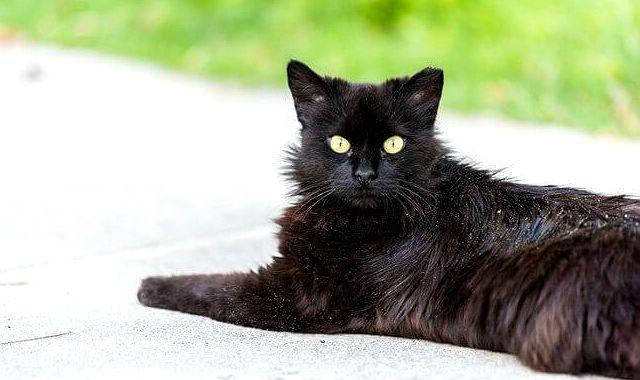
Treatment for this ailment depends on the underlying cause of hypothyroidism. If the disease is obtained after treating the pet with radioactive iodine or as a result of surgery, then you will have to wait until the body recovers on its own.
If the cat's thyroid gland is irreversibly damaged, then the appointment of replacement therapy is required, namely hormones in the form of pills for life. With this treatment, the cat's body will recover after a few months. In such a situation, the owner must remember to feed the cat daily hormonal preparations.
How to treat alopecia
How to treat alopecia depends largely on the diagnosis. Many mustachioed owners, at the sight of a bald patch, cry out in horror, "shingles!" and start looking for something to rub on it. This approach is completely wrong.
With feline alopecia most often a complex treatment is prescribed. Local therapy is indicated if bacterial or fungal infection has joined.
- Treatment of the underlying disease that caused hair loss in cats.
- If skin parasites are identified, drops, pills, shampoos are prescribed to get rid of. The prognosis is good if anti-parasitic treatments are carried out regularly.
- With infections – a course of antibiotics.
- With allergic reactions, the allergen is eliminated. If the cat has a food allergy, revision of the diet and exclusion diet. The prognosis is good if the food is chosen correctly. If the allergen is not identified, the prognosis for recovery is cautious.
- If it is stress, the cause should be ruled out. With proper behavioral correction, the prognosis is satisfactory. Therapy is long and requires patience from the owner.
- In the case of tumors – surgical intervention. Timely surgery gives the right to make a positive prognosis. In neglected cases, the animal is not operated.
Regardless of the cause, it is additionally necessary to strengthen the animal's immunity. Sometimes there is a question of the selection of the diet according to age, health, physiology.
Prevention of hair loss
If a cat has hair loss, what you should definitely not do is to self-diagnose and self-treat the pet. Each case of alopecia is different.
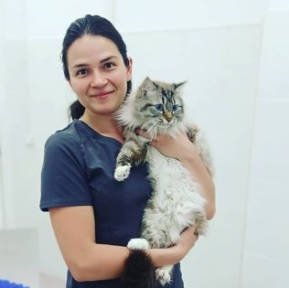
Education: Moscow State Academy of Veterinary Medicine and Biotechnology. K.I. Skryabin Moscow State Academy of Veterinary Medicine and Biotechnology, Department of Veterinary Medicine, specialty: veterinary surgeon.






